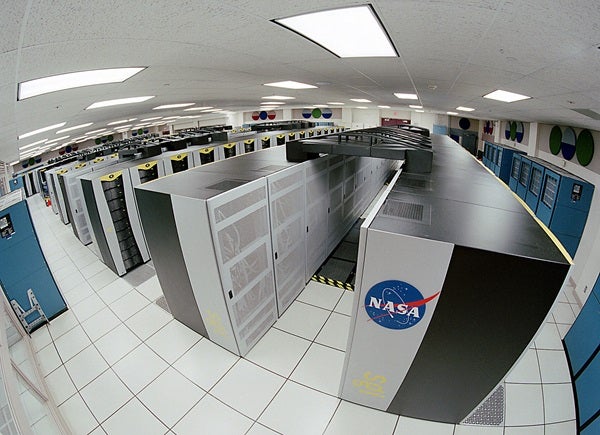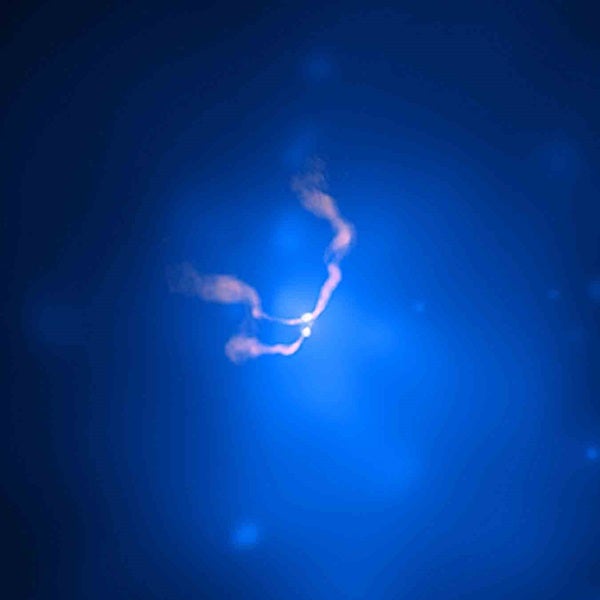But numerical relativity demands that researchers take on Albert Einstein full bore. Solving the equations of general relativity — Einstein’s grand theory of gravity — is a difficult enough problem. Their additional challenge is to digitally animate the most complex behaviors hiding inside those equations.
Getting results has become urgent. A new kind of telescope — gravitational wave detectors, built to sense ripples in the fabric of space and time — has recently come on line. These gravity observatories were built specifically to detect events like black-hole mergers. But the telescopes need guidance from computer models to know what sort of signal to look for. This special imperative has made numerical relativity the kind of challenge that draws theorists with a special kind of ambition.
For years, the computer codes at the heart of numerical relativity simulations could do little more than simply crash. All paths seemed blocked; nothing worked. In spite of all the intellectual firepower attracted to the research, and 30 years of work, some theorists were giving up hope. Simulating Einstein’s universe might not just be hard — it might be impossible.
But recent breakthroughs in computer modeling by numerical relativists mean the simulations work. They found a way to run Einstein’s equations as black holes collide, without crashing their supercomputers. Animations created from the model runs show black holes spiraling into each other and merging while emitting blasts of radiation and rippling gravity waves.
This research has opened a new window on the universe — one in which astronomers can hopefully observe disturbances in space-time as readily as flashes of X rays and visible light.
On the dusty plains of the Hanford Nuclear Reservation, about 200 miles (320 kilometers) southeast of Seattle stands numerical relativity’s reason for existence. It consists of two long vacuum chambers that meet to form an L-shaped gravity observatory. The facility is called LIGO, the Laser Interferometer Gravitational-wave Observatory.
The LIGO Hanford Observatory, along with a sister facility, the LIGO Livingston Observatory in Louisiana, represents a new kind of telescope. Engineers designed LIGO to pick up gravitational waves — ripples on the surface of space-time’s ocean that are a key prediction of Einstein’s general theory of relativity.
Wiggling any mass back and forth produces gravity waves that move across the fabric of space-time. Wiggling a massive, compact object like a black hole creates gravity waves so powerful that scientists hope instruments can detect them across astronomical distances.











